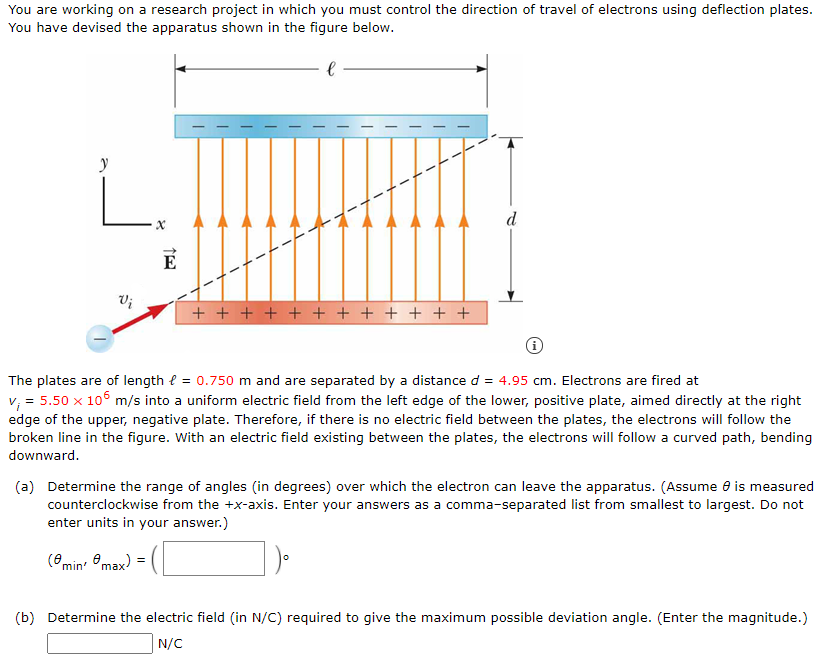You are working on a research project in which you must control the direction of travel of electrons using deflection plates. You have devised the apparatus shown in the figure below. (i) The plates are of length ℓ = 0.750 m and are separated by a distance d = 4.95 cm. Electrons are fired at vi = 5.50×106 m/s into a uniform electric field from the left edge of the lower, positive plate, aimed directly at the right edge of the upper, negative plate. Therefore, if there is no electric field between the plates, the electrons will follow the broken line in the figure. With an electric field existing between the plates, the electrons will follow a curved path, bending downward. (a) Determine the range of angles (in degrees) over which the electron can leave the apparatus. (Assume θ is measured counterclockwise from the +x-axis. Enter your answers as a comma-separated list from smallest to largest. Do not enter units in your answer. ) (θmin, θmax) = ( )。 (b) Determine the electric field (in N/C ) required to give the maximum possible deviation angle. (Enter the magnitude.) N/C
